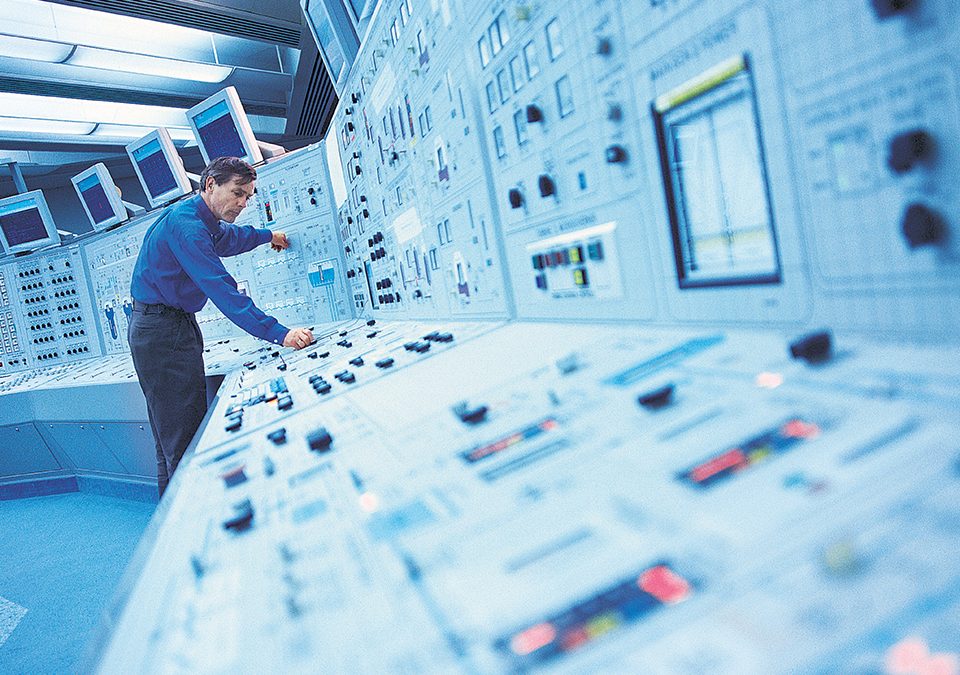Glen Canyon Dam: A Renewable Jewel in the Desert Southwest
Lack of Access to Electricity is Still a Global Problem
June 29, 2020U.S. Takes Steps to Reclaim International Nuclear Energy Mantle
July 8, 2020On September 22, 1966, and with much fanfare, the First Lady of the United States, Lady Bird Johnson, dedicated Glen Canyon Dam just over the Utah border in Page, Arizona.
Glen Canyon Dam is a concrete arch dam on the Colorado River in northern Arizona in the United States, near the town of Page. The dam was built to provide hydroelectricity and flow regulation from the upper Colorado River Basin to the lower. Its reservoir is called Lake Powell, and is the second-largest artificial lake in the country.
Producing 80% of all the system’s hydropower Glen Canyon is the power generating linchpin of the Colorado River Storage Project (CRSP). Unfortunately, it also bears the distinction of being ground zero of the environmental battleground surrounding the CRSP.
The conflict? How do we pursue new renewable resources that can help us achieve carbon emission goals while simultaneously preserving projects like Glen Canyon Dam that have served us so well? The reality is that we can’t get to the emissions future we all want without the exceptionally reliable resources already in place. Another reality is that we can’t restore long-changed natural environments to their near-former conditions, especially in the case of the Glen Canyon, without massive costs.
We’ve written much about the critical role that hydropower has played and continues to play in providing affordable, reliable, and clean electric energy to multiple regions throughout the United States. We kicked off our hydropower series with Scott Corwin of the Public Power Council, who discussed how “…at just seven percent of total electricity generation in the U.S., hydropower already displaces about 200 million metric tons of carbon dioxide emissions that would otherwise come from traditional, thermal generation.”
Corwin was right to highlight the role that hydropower plays in displacing carbon emissions. There is a well-funded campaign underway in his region, the Pacific Northwest, to remove the four Lower Snake River Dams. And that effort, which threatens to take away enormous generating assets, could actually succeed. At stake is a Lower Snake dam system that displaces 7,317 kilotons of carbon annually and eliminates the carbon footprint of 135,000 trucks by providing a critical inland water route to Idaho.
Sadly, the threat of removing these reliable and renewable and carbon-free gems isn’t unique to the Pacific Northwest. Last year, while discussing the 20-year operating plan of Glen Canyon Dam, environmental organizations called for the removal of the dam and the draining of the massive Lake Powell reservoir behind it, stating that “we need something new, it’s not working.”
The “it” that’s supposedly not working - according to Save the Colorado, the Center for Biological Diversity, and Living Rivers - is the adjustment of Glen Canyon’s operating plan. The plan had initially reduced Glen Canyon’s hydropower output by 30% in 1996 ($390 Megawatts or approximately 250,000 homes), followed by another operational decrease under the Long-term Environmental and Management Program (LTEMP) devised under the Obama Administration in 2016. The LTEMP hydropower production reduction could result in an additional $104 million hit to not-for-profit utilities and Native American entities who receive power from the dam.
The LTEMP was an attempt to balance the needs of the endangered species fish (pikeminnow, razorback sucker, humpback chub, and bonytail chub) downstream of Glen Canyon dam and to meet the needs of the 1992 Grand Canyon Preservation Act. This Senator McCain-authored act mandates higher river flows to return sediment to the beaches within the Canyon walls.
Unfortunately, the LTEMP doesn’t satisfy the environmental agenda of some activist groups, even though it has already drastically reduced the production of carbon-free, reliable, and renewable hydropower at Glen Canyon. Advocating for its removal would eliminate the carbon-free aspects of this resource and eliminate a resource capable of supporting the integration of significant amounts of new wind and solar energy without increasing carbon production. In other words, the Glen Canyon Dam actually helps support other forms of renewable power.
Removing Glen Canyon Dam seems to be the only acceptable alternative to these activists. Even Anne Castle, President Obama’s appointed Assistant Secretary of the Interior, who oversaw the LTEMP process, stated that removing the dam would have “…really significant, adverse consequences for big sectors of the economy, and I don’t think that would be undertaken lightly.”
Today, Glen Canyon’s renewable hydropower production offsets 4.4 million tons of greenhouse gases annually. Although renewables like wind and solar are increasing at an exponential rate, they are still mostly intermittent in nature. They can’t do what Glen Canyon Dam does. In fact, unlike the dam, wind and solar will need backup from natural gas.
Whether it’s the Lower Snake Dams in the Northwest or Glen Canyon in the Desert Southwest, there is an alarming trend within the environmental community to push for the removal of these renewable, reliable, and affordable sources of carbon-free power. This misguided advocacy doesn’t make sense in the fight to reduce carbon emissions and certainly doesn’t make sense for consumers.



